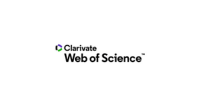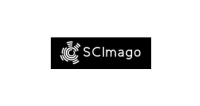NEOSPOROSE EQÜINA REVISÃO
DOI:
https://doi.org/10.5380/avs.v11i3.7417Palavras-chave:
Neosporose, eqüino, Neosporosis, Neospora caninum, Neospora hughesi, equineResumo
A neosporose eqüina é uma doença causada pelos protozoários Neospora caninum e Neospora hughesi, parasitas intracelulares obrigatórios. Os protozoários causam aborto, mortalidade neonatal, doenças neurológicas e viscerais em eqüinos. Os
anticorpos contra Neospora sp. foram detectados em eqüinos dos Estados Unidos, Brasil, Chile, Nova Zelândia, Coréia do Sul, França, Itália e Suécia. Nestes países a soroprevalência variou de 1% a 47%, em cavalos sadios. Os cães e os coiotes são os hospedeiros definitivos de N. caninum e o hospedeiro definitivo de
N. hughesi é desconhecido. Aspectos relativos à importância das duas espécies de Neospora como causa de abortos e doenças neurológicas em eqüinos, a epidemiologia e os métodos de diagnóstico precisam de estudos adicionais. Esta revisão aborda as informações sobre a neosporose eqüina, os parasitas, a epidemiologia, sinais clínicos, diagnóstico e a resposta imune.
Downloads
Como Citar
Edição
Seção
Licença
Autores que publicam nesta revista concordam com os seguintes termos:
- Autores mantém os direitos autorais e concedem à revista o direito de primeira publicação, com o trabalho simultaneamente licenciado sob a Creative Commons - Atribuição 4.0 Internacional que permite o compartilhamento do trabalho com reconhecimento da autoria e publicação inicial nesta revista.
- Autores têm autorização para assumir contratos adicionais separadamente, para distribuição não-exclusiva da versão do trabalho publicada nesta revista (ex.: publicar em repositório institucional ou como capítulo de livro), com reconhecimento de autoria e publicação inicial nesta revista.
- Autores têm permissão e são estimulados a publicar e distribuir seu trabalho online (ex.: em repositórios institucionais ou na sua página pessoal) a qualquer ponto antes ou durante o processo editorial, já que isso pode gerar alterações produtivas, bem como aumentar o impacto e a citação do trabalho publicado.













